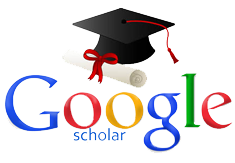AN ANALYSIS OF STUDENTS’ ERRORS IN WRITING OF RECOUNT A Case Study at the Eleventh grade MIPA2 of SMA Neg. 1 Tongauna Academic Year 2020/2021
DOI:
https://doi.org/10.31004/jpdk.v4i3.6012Abstract
The aims of this study were in term of construct the recount text, the use of correct grammar was need to mastery by the students. In the eleventh grade of SMA Neg. 1 Tongauna, in which this study was conducted to analyze of error students’ in writing of recount text. This study was descriptive analysis method in form of qualitative research. The sources of the study were the students from eleventh grade of MIPA2 that consisted of 28 students, but the researcher only analyzed 20 students. The instrument used in this study was writing text, the students made a recount text. In collecting data, students were giving the writing test of recount text. The data of students writing text showed the types of errors that students made in recount text. From the type of errors the researcher just focused in misformatioan and misordering based on surface strategy taxonomy. In misformation errors there three types, those are regularization error, archi form, and alternating form. The types of errors made by the students were 205 errors or 101,90%, misformation were 182 errors or 90,77% with categories regularization errors were 8 errors or 3,90%, archi form 55 errors or 26,83%, and alternating form were 119 errors or 58,05%. In misordering were 23 errors or 11,22%. Based on the result of this study, the researcher concluded that the dominant errors made by the students were alternating form of misformation as a highest level of the errors.Downloads
Published
2022-06-30
How to Cite
Fadli, M. . (2022). AN ANALYSIS OF STUDENTS’ ERRORS IN WRITING OF RECOUNT A Case Study at the Eleventh grade MIPA2 of SMA Neg. 1 Tongauna Academic Year 2020/2021. Jurnal Pendidikan Dan Konseling (JPDK), 4(3), 2574–2584. https://doi.org/10.31004/jpdk.v4i3.6012
Issue
Section
Articles
License
Copyright (c) 2022 M.Fadli

This work is licensed under a Creative Commons Attribution-ShareAlike 4.0 International License.
Authors retain copyright and grant the journal right of first publication with the work simultaneously licensed under a Creative Commons Attribution-ShareAlike 4.0 International License that allows others to share the work with an acknowledgement of the works authorship and initial publication in this journal. Authors are able to enter into separate, additional contractual arrangements for the non-exclusive distribution of the journals published version of the work (e.g., post it to an institutional repository or publish it in a book), with an acknowledgement of its initial publication in this journal. Authors are permitted and encouraged to post their work online (e.g., in institutional repositories or on their website) prior to and during the submission process, as it can lead to productive exchanges, as well as earlier and greater citation of published work (See The Effect of Open Access).





.png)










